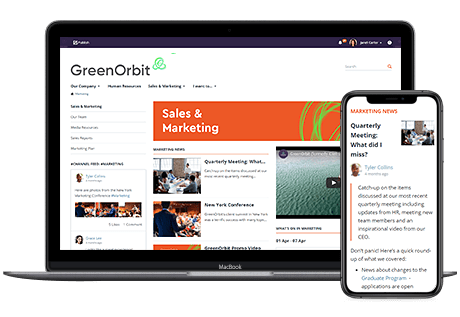
Users want the latest productivity apps but organizations cling to the control offered by legacy technology stacks - how do IT experts deliver an exceptional digital workplace that keeps everyone happy?
We expect a lot from our digital workplaces - that's because as tech consumers and smartphone aficionados we know what's possible.
From paying bills, to booking appointments and bingeing on Netflix - we've grown accustomed to smooth interfaces and predictable digital experiences. Things just work - and if they don't, well... there's an app for that.

Jumping between apps is fine for us as individuals, but spells chaos for the IT professionals in charge of modern digital workplaces.
At the office, collaboration is king and organizations need a cohesive way of getting things done. If some people are on WhatsApp and others are on Messenger - how can they share ideas and get work going?
This dichotomy leaves Enterprise IT caught between a rock and a hard place.
Employees want to use their flavor-of-the-month tools and, since the IT procurement team don't want to rain on anyone's parade or halt real productivity gains, they may turn a blind eye or add the tool to the already congested software register.
Thing is, this tool might be great for one department but a nightmare for another, and there's a good chance it'll be thrown to the curb when the next shiny thing comes along.

At the other extreme, Enterprise IT might put their foot down and get serious about which tools are allowed and which are not - because how do you manage security and maintain a level of assurance in an 'anything goes' software scenario?
To maintain control, the organization might have a well-defined process for selecting software solutions - and refuse to stray from the Preferred Vendor playlist. They may even stick with tired legacy infrastructure because it represents a significant financial investment and "is the way things are done around here".
In the first scenario, IT is left picking up the pieces of an impossibly fragmented workplace - while in the second they're being blamed for forcing everyone to use outdated and inflexible technology.
Is there a happy compromise?
Tim Flower, Director of Business Transformation at Nexthink, believes there is.
In a recent webinar via CMSWire he said the answer lies in taking a step back and spending time on research, reflection and strategic thinking.
The key to an exceptional digital workplace is not about the latest shiny app or complicated technology stack - it's about people and the tools they need to get work done.
Flower suggests that IT teams need to benchmark the current digital employee experience and look for evidence-based ways of improving it.
He says they need to spend less time responding to isolated issues and more time empathizing with users and understanding what a typical day is really like.
This involves taking a holistic view of the digital workplace backed up by quantitative and qualitative data - what are people doing and how do they feel about it?
Flower's company, Nexthink, makes a nifty device that gathers this intel as people go about their day-to-day work.
Oscar Berg - the webinar's co-presenter and author of Digital Workplace Strategy and Design - also emphasized the power of asking users to "tell me how you really feel":
He goes on to explain that productivity takes a nose dive when workers are faced with "interruptions, inconsistently designed systems and bad performance".
As both experts rightly point out - once IT teams truly understand the barriers to productivity in their organization - they can make informed decisions about the best way forward.
They can take a proactive stance and look beyond the issues that cross the help desk: "I'm stressed out by the number of tools I have to use" said no support ticket ever.

To calm the chaos of disparate communication tools, Enterprise IT might choose to deploy a digital workplace that has everything built in. One that gives users the social and collaborative features they crave without the distractions of platform-switching and multiple sign-ons.
To free themselves from the tyranny of support tickets and reactive problem solving, IT may look to implement a digital workplace that's secure, cloud based and easy to maintain - and do away with the complexities of shared licenses and messy payment cycles.
By implementing a digital workplace that's high on productivity but low on maintenance, IT professionals free themselves up to focus on what really matters - providing a digital employee experience that delivers true business value and measures up to the expectations of today's tech savvy workforce.
The correlation between effective collaboration and productivity is well documented - and Enterprise IT is uniquely positioned to ignite this flame.
Starting a fire instead of always putting one out!
To get a head start with improving productivity in your organization, download our free ebook: 5 Barriers to Productivity in the New World of Work.
